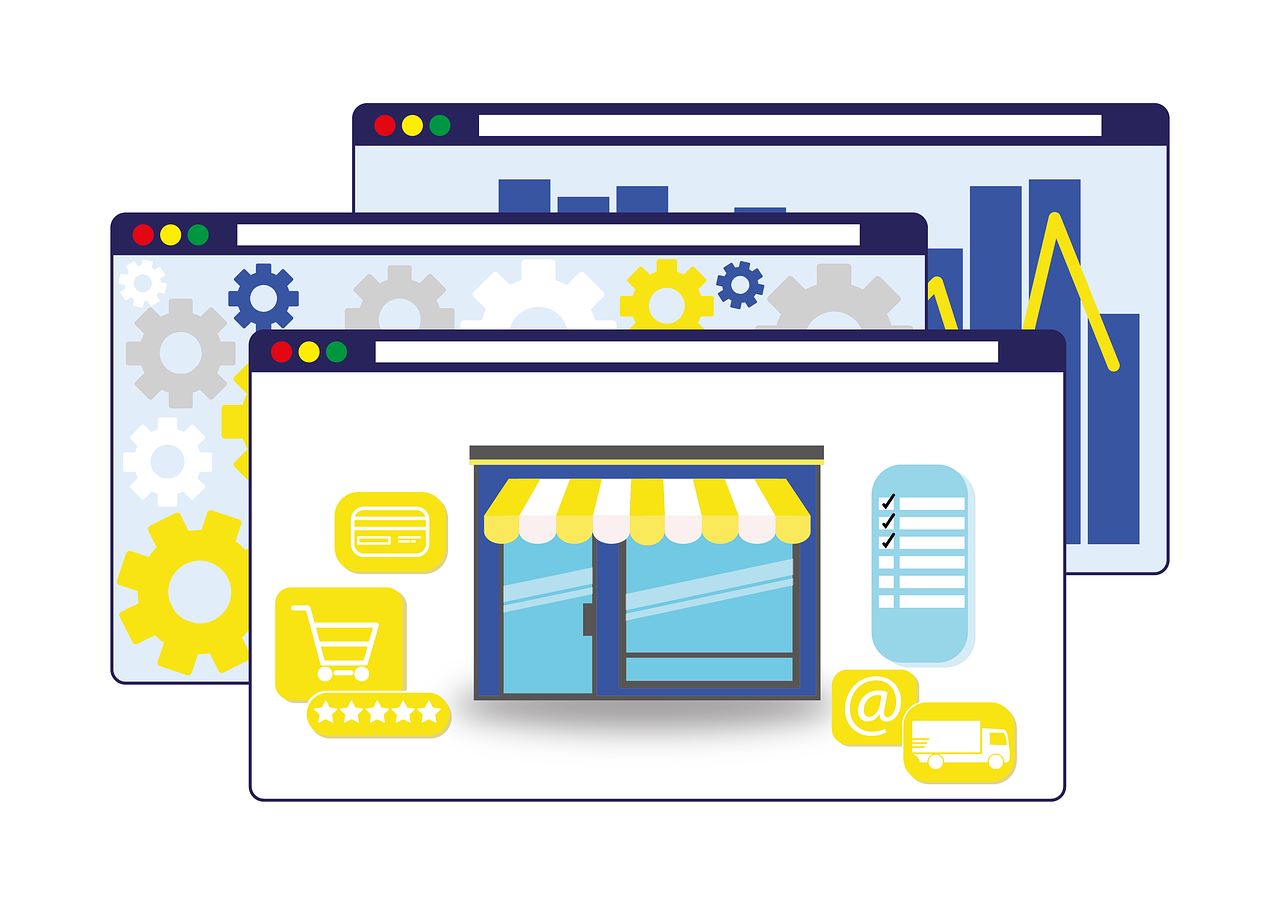The landscape of online retail is dotted with remarkable success stories, each offering valuable lessons on innovation, customer engagement, and strategic growth.
From small startups to global giants, these success stories provide a blueprint for thriving in the competitive world of e-commerce.
This article delves into several notable case studies of successful online retailers, highlighting the key strategies they employed to achieve their success.
Amazon: The Behemoth of Online Retail
Amazon’s journey from a humble online bookstore to the world’s largest online retailer is a testament to visionary leadership and relentless innovation.
Key strategies that fueled Amazon’s growth include:
- Customer Obsession: Amazon’s commitment to customer satisfaction drove innovations like one-click shopping and Prime two-day shipping, setting new standards for convenience and service.
- Diversification: Expanding beyond books into virtually every product category imaginable helped Amazon become a one-stop-shop for consumers.
- Technology and Data: Leveraging cutting-edge technology and data analytics allowed Amazon to personalize the shopping experience, optimize logistics, and maintain a competitive edge.
Zappos: Revolutionizing Customer Service
Zappos, an online shoe and clothing retailer, built its reputation and success on unparalleled customer service. Their strategies include:
- 365-Day Return Policy: This generous return policy removed the risk of online shopping, building trust and loyalty among customers.
- Company Culture: Zappos invested in creating a strong company culture focused on happiness and customer service, leading to high employee engagement and exceptional customer interactions.
- Free Shipping Both Ways: By offering free shipping for purchases and returns, Zappos addressed one of the major barriers to online shopping, encouraging more consumers to buy online.
Alibaba: Dominating the Chinese Market
Alibaba’s rise to become the leading e-commerce platform in China demonstrates the power of understanding and catering to local markets. Key strategies include:
- Marketplace Model: Instead of holding inventory, Alibaba connects buyers with sellers, facilitating a wide range of transactions from B2B to C2C, which allowed rapid scaling without the logistical challenges of direct sales.
- Payment Solutions: Launching Alipay, a secure online payment platform, helped overcome the lack of trust in online transactions among Chinese consumers.
- Singles’ Day Sales: Alibaba turned Singles’ Day, a relatively unknown Chinese holiday, into the world’s largest online shopping day, showcasing its marketing prowess and understanding of consumer behavior.
Shopify: Empowering Entrepreneurs
Shopify’s platform has enabled hundreds of thousands of entrepreneurs to launch and scale their online stores. Key strategies for their success include:
- Ease of Use: Shopify’s user-friendly platform makes it easy for anyone to set up an online store, removing technical barriers to entry.
- Customization and Support: Offering a range of customizable templates and 24/7 support, Shopify caters to businesses of all sizes, from startups to established brands.
- Ecosystem Expansion: By building an extensive ecosystem of apps and partners, Shopify has enhanced its platform’s functionality, allowing merchants to add features and integrations that drive sales and improve operations.
These success stories in online retail highlight the importance of customer-centric strategies, technological innovation, and market understanding.
Amazon’s focus on customer satisfaction, Zappos’s exceptional service, Alibaba’s adaptation to local preferences, and Shopify’s empowerment of entrepreneurs each represent different paths to success in the e-commerce world.
For emerging and established online retailers alike, these case studies offer inspiration and guidance on navigating the challenges and opportunities of the digital marketplace.
Quiz: Understanding Online Retail’s Basics and Historical Milestones
This quiz is designed to test your knowledge of the basic concepts and historical milestones in the development of online retail. Select the best answer for each question to see how well you understand the evolution and key aspects of e-commerce.
Question 1
Who is considered the pioneer of online retail, launching as an online bookstore before expanding into a wide range of product categories?
- A) eBay
- B) Amazon
- C) Alibaba
- D) Shopify
Question 2
What does the term “omnichannel retailing” refer to?
- A) Selling products exclusively through online channels
- B) Integrating various sales channels to provide a seamless customer experience
- C) Using social media platforms as the only sales channel
- D) Focusing on mobile commerce only
Question 3
Which online retail model involves transactions between businesses, such as manufacturers and wholesalers?
- A) B2C (Business-to-Consumer)
- B) B2B (Business-to-Business)
- C) C2C (Consumer-to-Consumer)
- D) D2C (Direct-to-Consumer)
Question 4
What significant event is credited with accelerating the growth of e-commerce by forcing more consumers to shop online?
- A) The dot-com bubble burst
- B) The launch of the smartphone
- C) The COVID-19 pandemic
- D) The invention of the internet
Question 5
Which company transformed Singles’ Day into the world’s largest online shopping day?
- A) Amazon
- B) eBay
- C) Alibaba
- D) Walmart
Question 6
What is a key feature of mobile commerce (m-commerce)?
- A) Transactions can only occur on desktop computers
- B) Shopping through mobile devices like smartphones and tablets
- C) Shopping is exclusively done through physical catalogs
- D) Transactions are only completed in physical stores
Question 7
In what year did Amazon.com launch, marking a significant milestone in the history of online retail?
- A) 1990
- B) 1994
- C) 1995
- D) 2000
Question 8
Which of the following is NOT a current trend in online retail?
- A) Social media shopping
- B) Omnichannel retailing
- C) Catalog shopping only
- D) Mobile commerce
Question 9
What was the primary function of the Electronic Data Interchange (EDI) system used in the early days of e-commerce?
- A) To enhance the graphics of online stores
- B) To facilitate the electronic exchange of business documents
- C) To secure online transactions with end-to-end encryption
- D) To track the physical location of customers
Question 10
Which platform is known for empowering entrepreneurs to create their own online stores with ease?
- A) Amazon
- B) Alibaba
- C) eBay
- D) Shopify
Answers:
- B) Amazon
- B) Integrating various sales channels to provide a seamless customer experience
- B) B2B (Business-to-Business)
- C) The COVID-19 pandemic
- C) Alibaba
- B) Shopping through mobile devices like smartphones and tablets
- C) 1995
- C) Catalog shopping only
- B) To facilitate the electronic exchange of business documents
- D) Shopify
How well did you score? This quiz covers foundational knowledge and milestones in online retail, reflecting on how far the industry has come and where it’s headed.
Activity: SWOT Analysis for a Hypothetical Online Retail Business
Objective: The goal of this activity is to conduct a SWOT analysis on a hypothetical online retail business named “EcoShop,” which specializes in eco-friendly and sustainable products ranging from household goods to personal care items. This exercise will help you understand the strategic planning process by identifying the internal and external factors that can impact EcoShop’s success in the online retail market.
Step 1: Strengths
- Product Differentiation: EcoShop offers a unique selection of eco-friendly and sustainable products, distinguishing itself from competitors in the online retail space.
- Brand Values: The company’s strong commitment to environmental sustainability resonates with a growing segment of consumers who prioritize eco-conscious purchasing decisions.
- Customer Service: EcoShop has invested in a user-friendly website and responsive customer service, enhancing the shopping experience and building customer loyalty.
- Supply Chain Sustainability: By partnering with green suppliers and optimizing logistics for lower carbon footprints, EcoShop reinforces its brand values and appeals to its target market.
Step 2: Weaknesses
- Pricing: Eco-friendly products often come with a higher price tag due to the cost of sustainable materials and ethical labor practices, which might deter price-sensitive customers.
- Brand Awareness: As a new entrant in the online retail market, EcoShop lacks the brand recognition of established competitors, making it challenging to attract first-time customers.
- Limited Product Range: The focus on eco-friendly and sustainable products may limit the range of items EcoShop can offer, potentially narrowing its market reach.
- Dependence on Suppliers: Relying on a niche market of green suppliers may pose risks if supply chain disruptions occur, affecting product availability.
Step 3: Opportunities
- Market Growth: The global demand for eco-friendly products is rising, presenting an opportunity for EcoShop to capture a larger market share as consumer preferences shift towards sustainability.
- Technological Advancements: Implementing new technologies for a better online shopping experience, such as AR (Augmented Reality) for product visualization, can enhance customer engagement.
- Collaborations and Partnerships: Partnering with environmental organizations or other eco-conscious brands can increase brand visibility and credibility.
- Expansion: Expanding the product line to include a wider range of eco-friendly products can attract a broader customer base and meet the diverse needs of sustainability-minded consumers.
Step 4: Threats
- Competition: The growing eco-friendly market segment has attracted many players, including large retailers expanding their sustainable product lines, increasing competition for EcoShop.
- Market Volatility: Changes in environmental regulations, economic downturns, or shifts in consumer behavior can impact the demand for eco-friendly products.
- Supply Chain Risks: Environmental disasters or global events affecting green suppliers can disrupt EcoShop’s inventory and product availability.
- Online Security: As an e-commerce business, EcoShop is susceptible to cybersecurity threats, which can undermine consumer trust if not adequately addressed.
Reflection Questions
- Which of EcoShop’s strengths can be leveraged to address its weaknesses?
- How can EcoShop capitalize on the opportunities presented in the market?
- What strategies can EcoShop employ to mitigate the threats identified?
This SWOT analysis provides a structured approach to understanding the strategic positioning of EcoShop in the competitive online retail market.
By analyzing strengths, weaknesses, opportunities, and threats, EcoShop can develop strategic plans to leverage its advantages, address challenges, and achieve long-term success.














